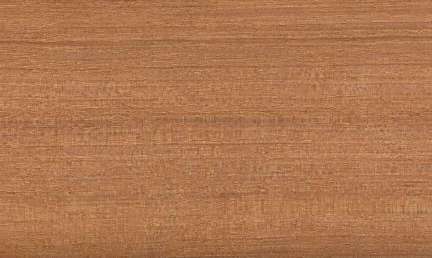
Ironwood (Ostrya virginiana)
Family:
Common names: Eastern hophornbeam, Ironwood
Distributed in: United States (North America)
Distribution overview: The natural growth range of the species extends from the Great Plains to the Atlantic Ocean, and from central Florida to Ontario. It is also found in small localized areas down into Mexico. The tree thrives on dry upland soils, and is common in hilly areas.
Common uses: Canes, Chairs, Chests, Concealed parts (Furniture), Desks, Dining-room furniture, Dowell pins, Dowells, Drawer sides, Farm vehicles, Fine furniture, Floor lamps, Fuelwood, Furniture , Furniture components, Furniture squares or stock, Handles, Hatracks, Kitchen cabinets, Levers, Living-room suites, Machinery parts, Novelties, Office furniture, Radio - stereo - TV cabinets, Rustic furniture, Shafts/Handles, Skids, Stools, Tables , Tool handles, Utility furniture, Vehicle parts, Wardrobes, Wheels , Woodenware
Product sources: Although the species is abundant within its growth range, it is seldom available as a commercial timber because of its small size.
Environment profile: Status within its natural growth range has not been officially assessed
Tree size: Trunk diameter is 200-250 cm
Colors: the heart isWhitish, Yellowand the sapwoodWhite, Yellow.The grain isWith distinct light and dark bands, the textureUniformand the lusterMedium
Natural durability: Resistant to termites, Susceptible to insect attack
Odor: No specific smell or taste
Kiln Schedules: US=T6B3/T3B1
Kiln Drying Rate: Rapid
Drying Defects: Slight surface checking, Splitting
Ease of Drying: Thick Stock Requires Care
Blunting Effect: Moderate
Boring: Fairly easy to very easy
Carving: Very Good to Excellent Results
Cutting Resistance: Fairly Difficult to Very Difficult to saw
Gluing: Fairly Easy to Very Easy
Mortising: Very Good to Excellent
Moulding: Fairly Easy to Very Easy
Movement in Service: Fairly Easy to Very Easy
Nailing: Fairly Easy to Very Easy, Very Good to Excellent
Planing: Very Good to Excellent
Resistance to Abrasion:
Ironwood has wear resistance comparable to that of iron
Resistance to Impregnation: Resistant sapwood
Response to hand tools: Responds Readily
Routing recessing: Fairly Easy to Very Easy
Sanding: Fairly Easy to Very Easy
Veneering qualities: Veneers easily, Veneers moderately easy
Steam bending: Unsuitable
Screwing: Fairly Easy to Very Easy
; Turning: Very Good to Excellent Results
Painting: Very Good to Excellent; Polishing: Very Good to Excellent; Staining: Very Good to Excellent; Varnishing: Very Good to Excellent;
- Numerical data Metric
- Numerical data English
- Strength properties
- References
 |
 |
 |
 |
| Item |
Green |
Dry |
Metric |
| Specific Gravity |
0,59 |
0,64 |
|
| Density |
|
|
kg/m3 |
| Bending Strength |
|
|
kg/cm2 |
| Crushing Strength |
|
|
kg/cm2 |
| Hardness |
|
|
kg |
| Impact Strength |
|
|
cm |
| Shearing Strength |
|
|
kg/cm2 |
| Stiffness |
|
|
1000 kg/cm2 |
| Tangential Shrinkage |
10 |
|
% |
| Radial Shrinkage |
8 |
|
% |
| Weight |
913 |
753 |
kg/m3 |
| Maximum Load |
|
|
cm-kg/cm3 |
| Toughness |
|
|
cm-kg |
| Static Bending |
|
|
kg/cm2 |
|
 |  |  |  | | Item | Green | Dry | English | | Specific Gravity | 0.59 | 0.64 | | | Weight | 57 | 47 | lbs/ft3 | | Radial Shrinkage | 8 | | % | | Tangential Shrinkage | 10 | | % | | Volumetric Shrinkage | 19 | | % | |
Weight = very heavy
Weight = heavy
Tough
Strong
Hardness (side grain) = hard
Arno, J. 1988. Ostrya virginiana - Eastern hophornbeam. In A Guide to Useful Woods of the World. Flynn Jr., J.H., Editor. King Philip Publishing Co., Portland, Maine. 1994. Page 256-257.Boone, R.S., C.J. Kozlik, P.J. Bois and E.M. Wengert. 1988. Dry Kiln Schedules for Commercial Woods: Temperate and Tropical. United States Department of Agriculture, Forest Service, Forest Products Laboratory, General Technical Report FPL-GTR-57, Madison, Wisconsin.Canadian Forestry Service. 1981.Canadian Woods - Their Properties and Uses. Third Edition. E.J. Mullins and T.S. McKnight, Editors. Published by University of Toronto Press, Toronto, Canada.Panshin, A.J. and C. deZeeuw. 1980. Textbook of Wood Technology, 4th Edition. McGraw-Hill Series in Forest Resources. McGraw-Hill Book Company, New York.
|








